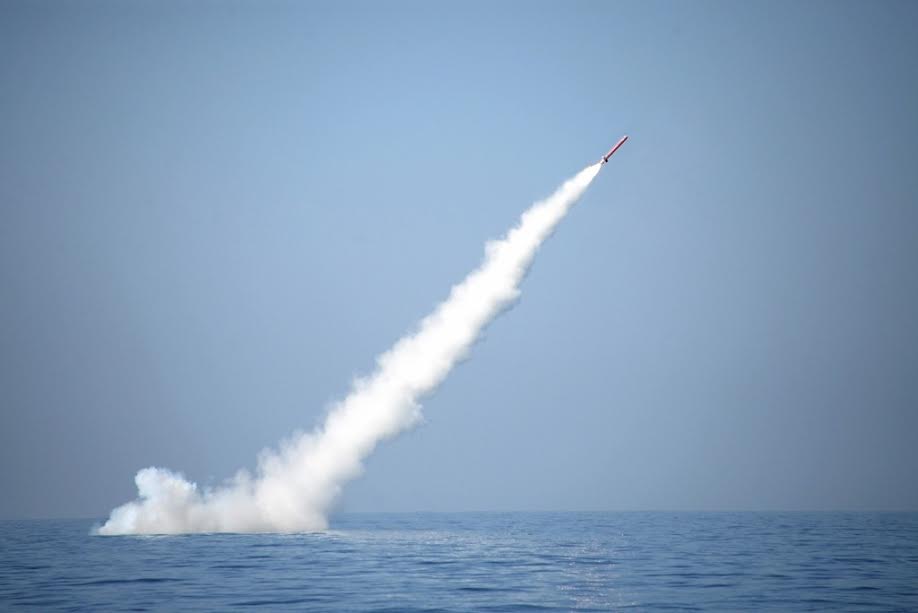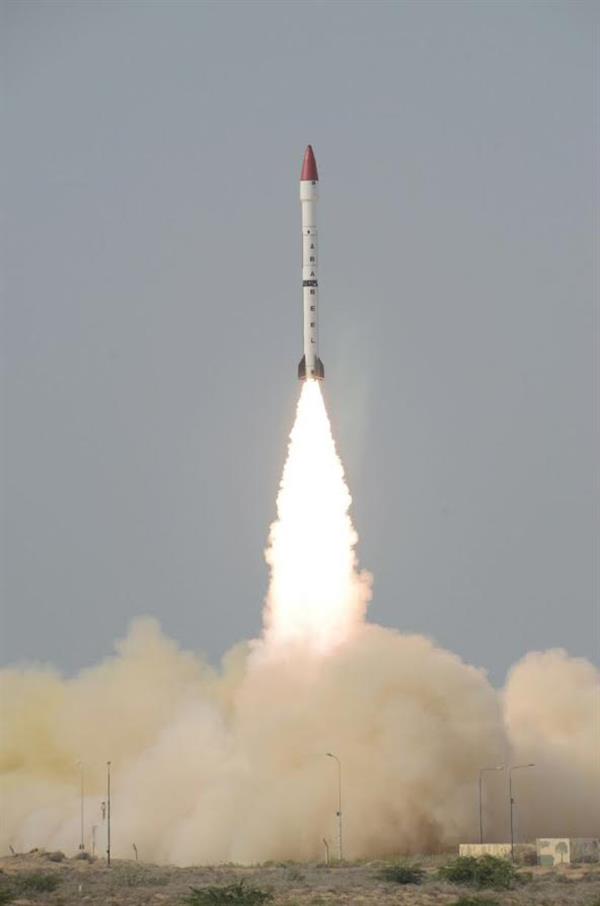
The recent war of words between the militaries of India and Pakistan epitomized the simmering rivalry between these nuclear-armed neighbors while amplifying the dangers of further escalation. “[…] If we will have to really confront the Pakistanis, and a task is given to us, we are not going to say we cannot cross the border because they have nuclear weapons. We will have to call their nuclear bluff,” said Indian Army Chief General Bipin Rawat while delivering the annual Army Day lecture. Expectedly, the spokesman of the Pakistan Army, Major General Asif Ghafoor, retorted: “Well, it’s their choice. Should they wish to test our resolve they may try and see it for themselves. […]The only thing stopping them is our credible nuclear deterrence as there is no space of war between the two nuclear states.” The Indian version of “fire and fury” and the quick rejoinder by Pakistan raise concerns among watchers of the region’s security dynamics. There is a reason why incendiary statements from the makers and executioners of security policies in India and Pakistan can lead to crisis instability: Pakistan’s ambiguous nuclear threshold. But changing threat perceptions and bellicosity from its arch-rival India are making a strong case for Pakistan to hasten its evolution toward a warfighting nuclear doctrine.
Deterrence Through Ambiguity: Undefined Redlines
After the overt nuclearization of South Asia in 1998, the Indo-Pakistani theater has often been referred to as a nuclear flashpoint owing to the continuation of casus belli in the shape of the Kashmir conflict. However, the possession of what Bernard Brodie called “the absolute weapon” has deterred both countries from escalating skirmishes at the tactical and sub-strategic levels to conflicts at the higher end of the conflict spectrum. A flared-up Line of Control (LoC) or Working Boundary cannot point toward the failure of strategic deterrence but shows that there is space for carrying out military engagements below the nuclear threshold.
This compels us to highlight the importance of the highly-touted nuclear threshold. While even a cursory look at India’s nuclear doctrine gives a lucid indication of India’s assimilation of the no-first-use policy, Pakistan has left an element of ambiguity in regards to its nuclear doctrine and red lines. As a weaker state whose security paradigm is affected by the 1971 Indo-Pak war. Pakistan has adopted deterrence through ambiguity. Pakistan’s former Chief of Army Staff, General Aslam Beg, was a firm believer in using ambiguity to enhance deterrence.
The strategy of ambiguity was largely successful even before both countries went overtly nuclear. The crises induced by the K Sundarji-led Operation Brasstacks and the stand-off in 1990, were, among other reasons, averted because of the ambiguous nuclear bogey. Similarly, the low-intensity conflict in the peaks of Kargil happened at a time when both countries were nascent nuclear-weapon-states. It is reasonable to assert that escalation was controlled because of the undefined nuclear threshold as both countries had not enunciated their doctrines. Also, international forces quickly intervened during the Twin Peaks crisis in 2001/02, primarily out of fear of the occurrence of a nuclear exchange. Pakistan, as a relatively more vulnerable state, handicapped by its limited resources and territorial depth, found it tenable to keep the enemy guessing.
According to Lt. Gen Khalid Kidwai, former spearhead of the Strategic Plans Division (SPD) that oversees the country’s nuclear weapons, Pakistan will use nuclear weapons if any of the four thresholds are reached: loss of large parts of territory (space threshold); destruction of large parts of land or air forces (military threshold); economic strangulation (economic threshold); and large-scale internal subversion (political threshold). At best, these red lines are not defined and in the event of a conflict, may be lowered depending on the dynamics on the ground.
Airstrikes as part of India’s Cold Start Doctrine have the propensity to reach the space and military thresholds of Pakistan. Cold Start envisions moving away from the difficult-to-quickly-mobilize three strike corps and instead form eight Integrated Battle Groups (IBGs) that attack along various axes to further ingress inside Pakistan. Then, with close air support, the IBGs would unleash firepower while the holding corps take up defensive positions. In order to avoid nuclear retaliation, Indian forces will bite and hold territory up to 50-80 kilometers inside Pakistan.
Hence, despite running the risk of deriding strategic deterrence, tactical nuclear weapons (TNWs) do provide Pakistan with a cushion at the lower rungs of the escalation ladder. The very fact that the impact of a nuclear warhead is not tactical by any means indicates that TNWs can serve as a deterrent against holding chunks of Pakistani territory, something that is the most important threshold for Pakistan.
In this context, it is noteworthy to mention that Indian airstrikes even on alleged militant camps inside Pakistan will invite a stern response. A few months ago, Indian Air Chief Marshal BS Dhanoa said: “[The IAF] has the ability to locate, fix and strike and that is not only for tactical nuclear weapons but for other targets across the border (as well).” But, as I have argued elsewhere, Pakistan may not consider Indian airstrikes as limited, justified, or a means to terminate conflict. They will merit a Pakistani response, because of the issue of sovereignty, and though India may have only wanted a limited war it could spiral into a full-scale war with the possibility of nuclear weapons use in the worst-case scenario.
A Warfighting Doctrine?
Despite not enunciating an official nuclear doctrine, Pakistan has one based on credible minimum deterrence (CMD) and first-use policy. CMD calls for the induction of no more weapons than required for deterring an adversary from attacking. However, contrary to popular belief, minimum does not denote a cap on the number. Both of these constants had suited Pakistan’s meagre resources and lack of geographical depth. However, as Helmuth von Moltke’s military adage says: “No battle plan ever survives first contact with the enemy.” So, Pakistan brought about dynamism in its doctrine, ostensibly to fill the deterrence gap.
During a talk at the Carnegie Endowment for International Peace in 2015, Gen Kidwai, widely-regarded as the country’s nuclear strategy doyen, asserted the importance of Full Spectrum Deterrence in great detail. He said, “What they (Indians) were finding attractive, and what was probably encouraging them to find the space for conventional war, below this gap, was the absence of a complete spectrum of deterrence, if I may. That is what we have been calling the full spectrum deterrence.” Kidwai’s lecture came close on the heels of Pakistan’s successful test launch of the Shaheen III surface to surface ballistic missile, capable of delivering nuclear and conventional warheads at a distance of 2,750 km. Kidwai said that the missile could reach prospective strategic bases in the Andaman and Nicobar Islands. This statement from the man who had remained in the thick of things amplifies the fact that Pakistan is moving toward a counterforce capability: one of the most important planks of a warfighting doctrine.
Arguably, one of the main reasons for a definite change in Pakistan’s doctrine seems to have been India’s will to teach Pakistan a lesson as exemplified by India’s National Security Adviser Ajit Doval’s proposal of the concept of defensive offense. Though theoretically the nuclear bogey doesn’t deter sub-conventional engagements, it does provide Pakistan with a crutch to protect the above-mentioned economic and political thresholds. Also, Pakistan’s gradual shift from credible minimum deterrence to full spectrum deterrence has been precipitated by India’s Ballistic Missile Defense (BMD) system. A defense shield can give a state much-needed confidence to resort to militarily challenge a nuclear-armed enemy.

Last January, Pakistan’s successful tests of the submarine-launched cruise missile Babar III and the surface-to-surface medium-range ballistic missile Ababeel were definite steps towards beefing up the country’s second-strike capability. A press release from the Inter Service Press Relations agency had stated: “Ababeel is capable of carrying nuclear warheads and has the capability to engage multiple targets with high precision, defeating the enemy’s hostile radars. Development of Ababeel weapon system is aimed at ensuring survivability of Pakistan’s ballistic missiles in the growing regional Ballistic Missile Defense (BMD) environment. This will further reinforce deterrence.” However, thus far, it is unclear whether multiple independently-targetable re-entry vehicle payloads and intelligence, surveillance, reconnaissance capabilities have been developed. Notwithstanding, it is reasonable to assert that efforts aimed at developing a counterforce capability are much in-line with a war-fighting doctrine wherein a state takes damage limitation measures, of which counterforce and second-strike capabilities are important pillars.
Pakistan’s quest to plug its deterrence gaps is fast-converting its nuclear doctrine into one that also focuses on warfighting instead of only war-prevention. As a relatively weaker state afflicted with immense security challenges, Pakistan would be better off with a doctrine that enhances deterrence through augmenting its capacity to fight. Statements and policy orientation in New Delhi indicates Indian willingness to punish Pakistan. Skirmishes on the border indicate this ability. In the words of David Singer, intent and capability constitute threat perception. Certainly, in such an environment, assured counterforce and second-strike capabilities are not only deterrence-multipliers but also important features of fighting the much-dreaded nuclear war.
***
Editor’s Note: Click here to read this article in Urdu
Image 1: Pakistan Army
Image 2: ISPR


